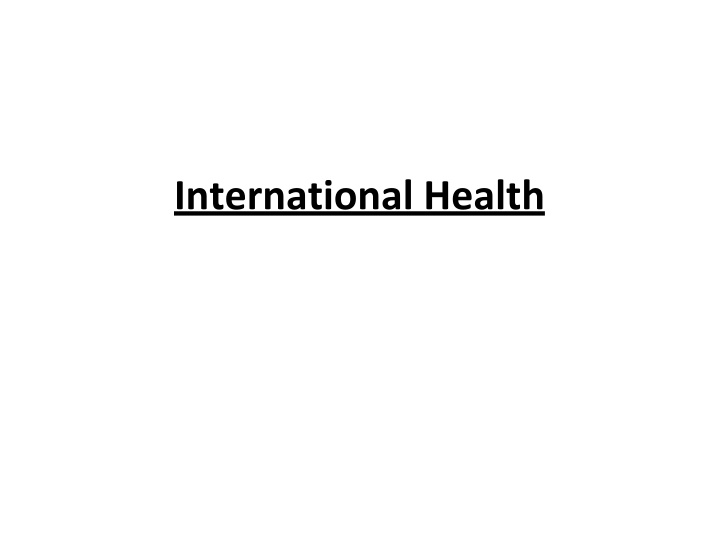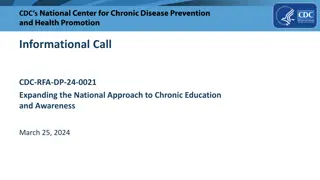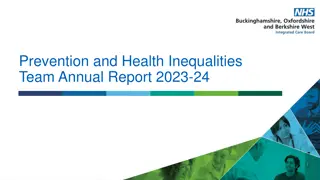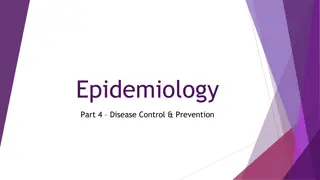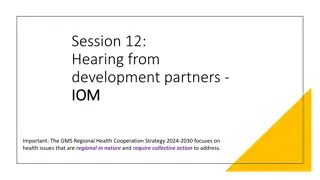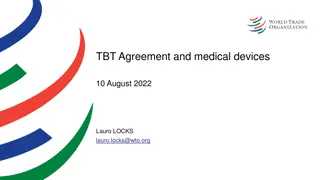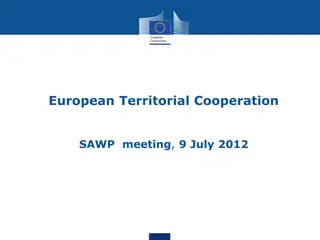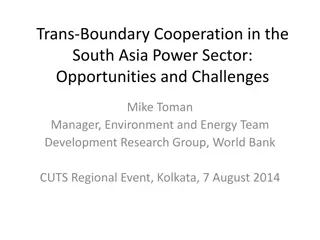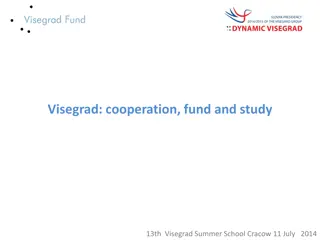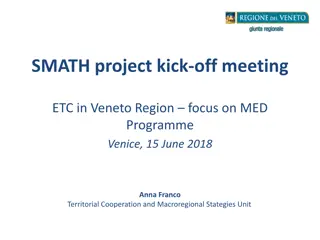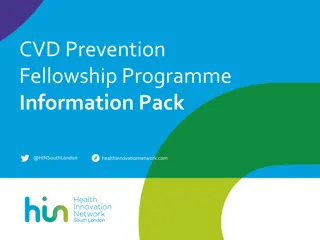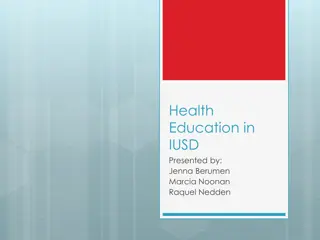International Health - A History of Disease Prevention and Cooperation
International Health, also known as Geographic Medicine or Global Health, focuses on public health across regional and international boundaries. The need for international cooperation in disease control led to the establishment of organizations and conferences. The history of quarantine, from its origins during the Plague to the challenges faced due to lack of knowledge, paved the way for collaborative efforts in managing communicable diseases on a global scale.
Download Presentation

Please find below an Image/Link to download the presentation.
The content on the website is provided AS IS for your information and personal use only. It may not be sold, licensed, or shared on other websites without obtaining consent from the author.If you encounter any issues during the download, it is possible that the publisher has removed the file from their server.
You are allowed to download the files provided on this website for personal or commercial use, subject to the condition that they are used lawfully. All files are the property of their respective owners.
The content on the website is provided AS IS for your information and personal use only. It may not be sold, licensed, or shared on other websites without obtaining consent from the author.
E N D
Presentation Transcript
Nothing is more international than a disease. - Paul Russel
INTERNATIONAL HEALTH Also called Geographic medicine or Global health . It is a field of health care, usually with emphasis towards public health dealing with health across regional and/or international boundaries.
BACKGROUND Health and diseases has no political boundaries. Disease in any part of the world is a threat to other countries. History replete with spread of disease (exm Plague and Cholera) along trade routes.
In order to protect spread of disease , attempts had been made by rulers/States to place barriers against infection by detection and isolation of travelers. In 14th Century a procedure Quarantine was introduced in Europe to protect importation of disease.
40 days quarantine programme in Europe plague . Quarantine soon became an established practice. Different countries adopted different quarantine procedures. This was ORIGIN of international health work.
But, later opposition came from several quarters 40 days long period and caused inconvenience for international trade and travelers. Quarantine failed in its objective because lack of scientific knowledge.
It became necessary for international agreement and cooperation on QUARANTINE matters to control communicable disease. Thus, International Conferences were held and organizations were set up to discussions, agreement and cooperation on matters of international health.
Early Health Organizations YEAR 1. First International Sanitary Conference 1851 2. Pan American Sanitary Bureau 1902 3. Office International D Hyegiene Publique 1907 4. The Health Organizations of League of Nations 1923 The United Nations Relief and Rehabilitation Administration 5. 1943 6. Birth of WHO 1948
FIRST INTERNATIONAL SANITARYCONFERENCE (PARIS - 1851) Convened in Paris. Attended mainly by Europian countries: Austria, France, Great Britain, Greece, Portugal, Russia, Spain and four Sovereign States (Sardinia, the two Sicilies and Tuscany) & Turkey. Objective: To bring some order and uniformity in the quarantine measures.
Prepared an International Sanitary Code containing 137 articles dealing with cholera, plague and yellow fever but never came into existence. Further, 10 other conferences were held between 1851 1902 for the same purpose but were equally unsuccessful.
PAN AMERCIAN SAITARY BUREAU (PASB) (AMERICA 1902) First International HealthAgency. Intended to coordinate quarantine procedure inAmerican States. Pan American Sanitary Code signed in 1924 Still in force between the states.
1947 Bureau was reorganized and called the Pan American Sanitary Organization. (PASO) 1958 renamed Pan American Health Organization since then PAHO has grown as major health agency headquarters in Washington, D.C.
OFFICE INTERNATIONAL DHYGIENE PUBLIQUE (OIHP) (PARIS 1907) International Sanitary conference lead to the establishment of a Permanent International Health Bureau (1903). OIHP also k/as Paris Office started to disseminate information on communicable diseases and supervised international quarantine measures.
OIHP and PASB joined together. British India and 60+ countries joined OIHP. Continued to exist until the 1950 and was taken over by the WHO.
THE HEALTH ORGANIZATIONS OF THE LEAGUE OF NATIONS (1923) After first World War - I (1914 - 1918) the League of Nations was established to build a better world. League of Nations include Health Organization which took steps in matters of international concern for prevention and control of disease.
Not concerned only with quarantine. But, branched out into various fields of nutrition, housing, rural hygiene, training of health workers etc. League analyzed epidemiological information and started the series of periodical epidemiological reports now issued byWHO.
Till second world war the three co-existed (OIHP, PASB and HO.) In 1939, League of Nations dissolved, but its Health Organization in Geneva continued to publish Weekly Epidemiological Reports.
THE UNITED NATIONS RELIEFAND REHABILITATION ADMINISTRATION (UNRRA) (1943) Purpose organize recovery from the effect of World War- II. Had a health division to care of health to the millions displaced, to restore and help services and to revive machinery to aid the exchange of information on epidemic diseases.
Did outstanding work of preventing the spread of typhus and other diseases. Assistance to malaria control in Italy and Greece. 1946 taken over by Interim Commission of the WHO.
BIRTH OF THEWHO In April 1945 Conference at San Francisco United Nation was formed. 7th April 1948 WHO was born. World Health Day - 7thApril
WHO is a specialized, non-political health agency of United Nations. Its constitution came in to force on 7th April 1948 . (Rene Sand - Chairmen) Which is celebrated as World Health Day.
WORLD HEALTH ORGANIZATION (WHO) Headquarters Geneva, Switzerland. It s a part of UN, not subordinate to it.
It is unique among the UN specialized agencies that it has own constitution, governing bodies, members and budget. Each member contributes to the budget and is thus entitled to its services and also has a right to vote.
OBJECTIVE Attainment by all people s of the highest level of health. Current objective Attainment by the all people of the world a level of health that will permit them to lead a socially and economically productive life.
Preamble of the Constitution Health is a state of complete physical, mental and social well-being and not merely absence of disease or infirmity. The enjoyment of highest attainable standard of health is one of the fundamental rights of every human being without distinction of race, religion, political belief, economic and social conditions.
Membership Open to all countries. Most nations are members of UN and WHO. (except- Switzerland member of WHO only) In 1948, the WHO had 56 members. Now has 194 members states and two associate members.
Functions of WHO First Constitutional Function is to act as the directing and coordinating authority in all International healthwork. 1. Prevention and control of specific diseases. 2. Development of comprehensive health services. 3. Family Health. 4. Environmental Health. 5. Health Statistics. 6. Biomedical Research. 7. Health Literature and Information. 8. Cooperation with other organizations.
1. Prevention and control of specific diseases Epidemiological surveillance of communicable disease. Collect and disseminate information on diseases subjectto IHR. ATRS AutomaticTelex Reply System. WER - Weekly Epidemiological Record. The aim of IHR is to ensure maximum security againstspread of disease. Non-communicable disease Cancer, CVS, DM, mental disorders, drug addiction.
2. Development of Comprehensive Health Services. Function is to promote and support development of National health policy and National Health Programs. Organizing health system based on Primary health Care. Development of health manpower and building of long term national capabilities. Appropriate Technology for Health (ATH) is a new programme to encourage self sufficiency in Primary health Care.
3. Family Health Major programme activities of WHO since 1970. Subdivided into Maternal and child health care (MCH), human reproduction, nutrition, and health education. Chief concern improvement of the quality of life of the family as a unit.
4. Environmental Health Advisory to govts Sanitary services. Protection of quality of air, water andfood. Health conditions at work. Radiation protection. Detection of new hazards from new technological developments. WHO Environmental Health Criteria Programme. WHO Environmental Health Monitoring Programme.
5. Health Statistics 1. Since 1947, morbidity and mortality statistics are published in a. Weekly Epidemiological Records. b. World Health Statistics Quarterly. c. World Health StatisticsAnnual. 2. Statistics from different countries should be comparablehence, WHO publishes- International Classification of Diseases. (Updated in every 10 years. 10th revision- 1993) 3. Assistance is provided to countries to improve their medical records and help in planning and operation of NationalHealth Information Systems.
6. Bio-Medical Research WHO Stimulates and coordinates research work. Worldwide network of WHO collaborating centers. For promoting research WHO awards grants to researchers and research institutions Two committees: 1. Regional Advisory Committees define regional health priorities. 2. Global Advisory Committees deals with policy issues. Target of WHO special programs for research and training: Six diseases malaria, schistosomiasis, trypanosomiasis, filariasis, leishmaniasis and leprosy. To develop new tools, train workers and strengthen research institutions.
7. Health Literature and Information WHO LIBRARY Satellite center of Medical Literature Analysis and Retrieval System (MEDLARS). Only fully computerized indexing system covering the whole of medicine on an international basis. Public information services are found both at headquarters and six regional offices.
8. Cooperation with other organizations. Collaborates with UN and other specialized agencies. WHO maintains working relationships with a number of International Government Organizations.
Three principal organs 1. The World HealthAssembly. 2. The Executive board. 3. The Secretariat.
WORLD HEALTH ASSEMBLY Health Parliament of Nations and the supreme governing body of the organization. Meets annually at headquarters in Geneva, Switzerland. Health Assembly appoints Director general on the nomination of Executive board. Functions: 1. To determine international health policy and programs. 2. To review the work of the past. 3. To approve the budget for following year. 4. To elect Member States to serve for 3 years on the Executive Board.
THE EXECUTIVE BOARD Board now has 34 members each designated by a MemberState . Should have at least 3 persons from each WHO region. Meets twice a year. To give effect to the decisions and policies of theAssembly. Has power to take decisions Emergencies. E.g. Earthquakes, epidemics, floods etc.
THE SECRETARIAT Headed by Director General - chief technical andadministrative officer of the organization. Assisted by 5 Assistant Director Generals at theheadquarters. Function: To provide technical and managerial support for their national health development programs. WHO staff In 1948 250 in 2010 - 8000
WHO Secretariat comprises of 14 different divisions 1. Division of epidemiological surveillance and health situation and trend assessment. 2. Division of communicable diseases. 3. Division of vector biology and control. 4. Division of environmental health. 5. Division of public information and education for health. 6. Division of mental health. 7. Division of budget and finance etc.
8. Division of strengthening of health services. 9. Division of family health. 10. Division of non-communicable diseases. 11. Division of health manpower and development. 12. Division of information system support. 13. Division of personal and general services. 14. Division of budget and finance.
WHO Regional Organizations SN Region Headquarters 1. South East Asia Region New Delhi 2. Africa Brazzaville Congo 3. The Americas Washington D.C. (U.S.A.) 4. Europe Copenhagen (Denmark) 5. Eastern mediterrianean Alexandria (Egypt) 6. Western pacific Manila (Phillipines)
The South East AsiaRegion Head quarter in New Delhi k/as World Health House, Indraprastha Estate. Region has 11 members India, Bangladesh, Bhutan, Indonesia, Korea, Maldives, Myanmaar, Nepal,Srilanka, Thailand,Timor-leste. Major activities Malaria eradication, TB control, control of other communicable disease, health statistics, public health administrations, environment health and water supply, nutrition, mental health, quality control and medicaleducation.
United Nations International Childrens Emergency Fund Specialized agency of United Nations Established 1946 To deal with rehabilitation of children in war ravaged countries. 30 nations executive board.
Now, United Nations Childrens Fund UNICEF Head Quarters NewYork. Works in collaboration with WHO, UNDP, FAO. Early years, worked with WHO urgent problems Malaria, TB etc. Country Health Program focuses on whole child.
SERVICESPROVIDED Child Health ChildNutrition Family and ChildWelfare Education (Formal & Non- Formal) 1. CHILD HEALTH: i. Provides aid for the production of vaccines and sera. ii. Assisted environmental sanitation programs for safe and sufficient water for drinking and householdwork. iii. Providing Primary Health Care: Mother and Children (immunization, infant and young child care, family planning, safe water and adequate sanitation) iv.Local community participation planning personnel and materialsupport.
